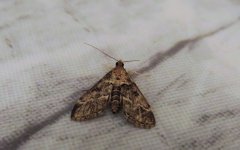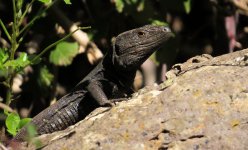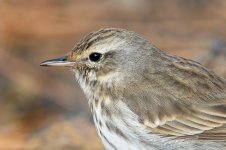Brian Stone
A Stone chatting
(Nearly) Four Weeks in Tenerife
After a delay of a couple of days due to severe flooding at our campsite in Lincolnshire, we made the journey to Playa San Marcos on the North coast of Tenerife close to the NW hub town of Icod de los Vinos. Having spent a month on the island in February 2022 with a car there was no pressure to see any of the island's endemic birds and we were able to enjoy the local area, exploring a little further afield using the frequent, cheap and extensive bus network. However we never strayed outside a 20km radius from our base.
Just 28 species of bird seen. Virtually no movement on the sea. I kept checking at different times of the day and did some longer sessions but only saw one Cory's Shearwater. This was seen from inside the bay passing west close in with 5 smaller shearwaters that looked like Manx. One other distant shearwater sp. seen on one of a few long, dedicated birdless seawatches from the headland was the only other pelagic. Quite disappointing and such a huge contrast to two years ago when I was logging Cory's into four figures daily at Punta de Hidalgo much further east on the north coast and picking up a few other species.
The sea did however provide some extremely good views of up to 10 Risso's Dolphins (and some more distant views of what may have been other dolphin species) and I also had an unexpected fly by first winter Kittiwake one evening in the bay and a very distant probable Mediterranean Gull on another otherwise fruitless seawatch.
It was good watching some of the endemic sub-species with the Kestrel, Robin and African Blue Tit all having distinct island forms. The Robin appears to be a particularly good candidate for full species status. An unexpected bonus was a Long-eared Owl that flew across from the barranco at San Marcos one evening. On one of several visits to Garachico a single Ring-necked Parakeet flew by.
One major success was a visit to El Tanque a short bus ride from Icod. Only intended to visit the spectacular viewpoint here and have an afternoon stroll around, but walking up from the town immediately saw what I was sure was a Laurel Pigeon flash by. Turned out the little valley held at least 4 Bolle's and 2 Laurel Pigeons, often perched fairly close in full view in the large eucalyptus trees. Plenty of flying around and calling/singing and often seen commuting via the town to the laurel forest beyond. I even saw them while waiting for the bus back in the town centre. I would thoroughly recommend this spot for the pigeons, at this time of year and time of day at least. Butterlies were also good here with my best views of Canary Red Admiral and several other species. You can also get a reasonably priced beer (and some fancy looking food if you like) at the restaurant here.
Insect life was more satisfying generally, and many of the butterflies were making use of this unseasonably warm January. Our location is a hotspot for Monarch and these showed daily along with occasional sightings of Plain Tiger. Painted Lady was also frequent, especially at the coast. Long-tailed Blue was fairly abundant, Canary Speckled Wood in small numbers in more wooded areas and Small White ubiquitous. Less common were Small Copper, African Grass Blue and Geranium Bronze.
A visit to the Parque del Drago Milenario in Icod de los Vinos was particularly good. The 1000 year old dragon tree itself is pretty impressive but the park is also quite extensive and planted with a wide variety of plants that in turn attract many insects and birds. Along with most other butterfly species, I was pleased to see Canary Blue well here and also had frustrating views of Canary Brimstone, which unfortunately would not settle in sight for long. These were my only lifers of the whole month.
Other insects included the endemic hoverfly Chrysotoxum triarcuatum seen during a long walk at Erjos, that also revealed Blue Emperor and the only Plain Swifts (at least 18 often very close) and Canary Islands Chaffinches of the month. Red-veined Darter and Blue Emperor were the only odonata and not seen often. Brown Triangle Snout was a common dayflying moth in places among the extensive banana plantation monoculture, Hummingbird Hawk-moth showed just twice, European Pepper Moth once at the apartment and I had a single Hawaiian Beet Webworm.
Tenerife Lizards deserve a mention as they are everywhere and always a joy to watch. And I also saw Atlantic flyingfish (although little else) at Punta de Teno after a spectacular and thoroughly recommended bus trip along the edges of the high steep cliffs. Among the fish seen while swimming at San Marcos were Canary Damselfish, Mediterranean Parrotfish and Ornate Wrasse.
Muscovy Duck (yuck)
Barbary Partridge
Feral Pigeon
Bolle's Pigeon
Laurel Pigeon
Collared Dove
Plain Swift
Black-legged Kittiwake
Yellow-legged Gull
Cory's Shearwater
Manx Shearwater
Little Egret
Grey Heron
Common Buzzard
Long-eared Owl
Common Kestrel
Ring-necked Parakeet
Common Raven
African Blue Tit
Canary Islands Chiffchaff
Eurasian Blackcap
Sardinian Warbler
Eurasian Blackbird
European Robin
Grey Wagtail
Berthelot's Pipit
Canary Islands Chaffinch
Atlantic Canary
After a delay of a couple of days due to severe flooding at our campsite in Lincolnshire, we made the journey to Playa San Marcos on the North coast of Tenerife close to the NW hub town of Icod de los Vinos. Having spent a month on the island in February 2022 with a car there was no pressure to see any of the island's endemic birds and we were able to enjoy the local area, exploring a little further afield using the frequent, cheap and extensive bus network. However we never strayed outside a 20km radius from our base.
Just 28 species of bird seen. Virtually no movement on the sea. I kept checking at different times of the day and did some longer sessions but only saw one Cory's Shearwater. This was seen from inside the bay passing west close in with 5 smaller shearwaters that looked like Manx. One other distant shearwater sp. seen on one of a few long, dedicated birdless seawatches from the headland was the only other pelagic. Quite disappointing and such a huge contrast to two years ago when I was logging Cory's into four figures daily at Punta de Hidalgo much further east on the north coast and picking up a few other species.
The sea did however provide some extremely good views of up to 10 Risso's Dolphins (and some more distant views of what may have been other dolphin species) and I also had an unexpected fly by first winter Kittiwake one evening in the bay and a very distant probable Mediterranean Gull on another otherwise fruitless seawatch.
It was good watching some of the endemic sub-species with the Kestrel, Robin and African Blue Tit all having distinct island forms. The Robin appears to be a particularly good candidate for full species status. An unexpected bonus was a Long-eared Owl that flew across from the barranco at San Marcos one evening. On one of several visits to Garachico a single Ring-necked Parakeet flew by.
One major success was a visit to El Tanque a short bus ride from Icod. Only intended to visit the spectacular viewpoint here and have an afternoon stroll around, but walking up from the town immediately saw what I was sure was a Laurel Pigeon flash by. Turned out the little valley held at least 4 Bolle's and 2 Laurel Pigeons, often perched fairly close in full view in the large eucalyptus trees. Plenty of flying around and calling/singing and often seen commuting via the town to the laurel forest beyond. I even saw them while waiting for the bus back in the town centre. I would thoroughly recommend this spot for the pigeons, at this time of year and time of day at least. Butterlies were also good here with my best views of Canary Red Admiral and several other species. You can also get a reasonably priced beer (and some fancy looking food if you like) at the restaurant here.
Insect life was more satisfying generally, and many of the butterflies were making use of this unseasonably warm January. Our location is a hotspot for Monarch and these showed daily along with occasional sightings of Plain Tiger. Painted Lady was also frequent, especially at the coast. Long-tailed Blue was fairly abundant, Canary Speckled Wood in small numbers in more wooded areas and Small White ubiquitous. Less common were Small Copper, African Grass Blue and Geranium Bronze.
A visit to the Parque del Drago Milenario in Icod de los Vinos was particularly good. The 1000 year old dragon tree itself is pretty impressive but the park is also quite extensive and planted with a wide variety of plants that in turn attract many insects and birds. Along with most other butterfly species, I was pleased to see Canary Blue well here and also had frustrating views of Canary Brimstone, which unfortunately would not settle in sight for long. These were my only lifers of the whole month.
Other insects included the endemic hoverfly Chrysotoxum triarcuatum seen during a long walk at Erjos, that also revealed Blue Emperor and the only Plain Swifts (at least 18 often very close) and Canary Islands Chaffinches of the month. Red-veined Darter and Blue Emperor were the only odonata and not seen often. Brown Triangle Snout was a common dayflying moth in places among the extensive banana plantation monoculture, Hummingbird Hawk-moth showed just twice, European Pepper Moth once at the apartment and I had a single Hawaiian Beet Webworm.
Tenerife Lizards deserve a mention as they are everywhere and always a joy to watch. And I also saw Atlantic flyingfish (although little else) at Punta de Teno after a spectacular and thoroughly recommended bus trip along the edges of the high steep cliffs. Among the fish seen while swimming at San Marcos were Canary Damselfish, Mediterranean Parrotfish and Ornate Wrasse.
Muscovy Duck (yuck)
Barbary Partridge
Feral Pigeon
Bolle's Pigeon
Laurel Pigeon
Collared Dove
Plain Swift
Black-legged Kittiwake
Yellow-legged Gull
Cory's Shearwater
Manx Shearwater
Little Egret
Grey Heron
Common Buzzard
Long-eared Owl
Common Kestrel
Ring-necked Parakeet
Common Raven
African Blue Tit
Canary Islands Chiffchaff
Eurasian Blackcap
Sardinian Warbler
Eurasian Blackbird
European Robin
Grey Wagtail
Berthelot's Pipit
Canary Islands Chaffinch
Atlantic Canary
Attachments
-
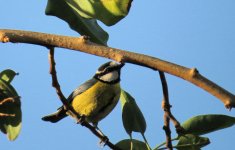 african_blue_tit_17jan24_1650l_8536.jpg280.9 KB · Views: 20
african_blue_tit_17jan24_1650l_8536.jpg280.9 KB · Views: 20 -
 atlantic_canary_1724l_14jan24_8496.jpg194.4 KB · Views: 20
atlantic_canary_1724l_14jan24_8496.jpg194.4 KB · Views: 20 -
 berthelots_pipit_9jan24_1778l_8483.jpg441.7 KB · Views: 26
berthelots_pipit_9jan24_1778l_8483.jpg441.7 KB · Views: 26 -
 bolles_pigeon_30jan24_1080s_8780.jpg308.5 KB · Views: 25
bolles_pigeon_30jan24_1080s_8780.jpg308.5 KB · Views: 25 -
 common_kestrel_caneriensis_8jan24_1080p_8470.jpg154.2 KB · Views: 25
common_kestrel_caneriensis_8jan24_1080p_8470.jpg154.2 KB · Views: 25 -
 common_kestrel_caneriensis_fem_9jan24_1724l_8486.jpg368.3 KB · Views: 24
common_kestrel_caneriensis_fem_9jan24_1724l_8486.jpg368.3 KB · Views: 24 -
 european_robin_25jan24_1080s_8698.jpg210.5 KB · Views: 28
european_robin_25jan24_1080s_8698.jpg210.5 KB · Views: 28 -
 laurel_pigeon_30jan24_1080s_8790.jpg296.2 KB · Views: 28
laurel_pigeon_30jan24_1080s_8790.jpg296.2 KB · Views: 28 -
 laurel_pigeon_30jan24_1632l_8795.jpg299 KB · Views: 29
laurel_pigeon_30jan24_1632l_8795.jpg299 KB · Views: 29 -
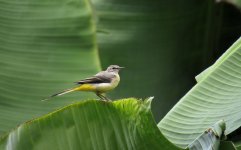 grey_wagtail_19jan24_1730l_8564.jpg260.9 KB · Views: 28
grey_wagtail_19jan24_1730l_8564.jpg260.9 KB · Views: 28
Last edited:






















